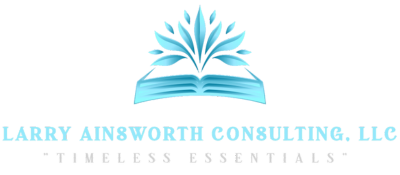COMPOSE BIG IDEAS AND CREATE ESSENTIAL QUESTIONS +
About the Big Ideas and Essential Questions Workshop
Big Ideas: “Unwrapped” Essential Standards and Student Learning Targets focus on what students are to learn, and Success Criteria focus on how students will show they have learned it. The reasons why the “unwrapped” concepts and skills in Essential Standards are important for students to understand and be able to express in their own words are known as the Big Ideas. Big Ideas are one of the most powerful instructional strategies educators can use to help students retain what they have been taught—and what they have learned—long after instruction ends.
Essential Questions are engaging, open-ended questions that educators use to spark student interest in learning the content of the unit about to begin and use throughout the unit to sharply focus curriculum, instruction, and assessments. Like their corresponding Big Ideas, they are “timeless essentials” to include in the creation of integrated units of study. Together, they characterize the reciprocal relationship between teaching and learning—Big Ideas are the students’ responses to the teacher’s Essential Questions.
Recommended Preparatory Workshop
“Unwrap” the Essential Standards for Teacher Clarity
Participants in this Big Ideas and Essential Questions Workshop will benefit from first experiencing how to “unwrap” Essential Standards as preparation for composing standards-aligned Big Ideas and Essential Questions that frame each unit of study.
What You Will Experience and Create Through Explanation, Examples, and Practice
Part 1: Compose the Big Ideas
- See the “Big Picture” of the Integrated Teaching & Learning System©
- Learn How “Unwrapped” Essential Standards, Student Learning Targets, Success Criteria, and Big Ideas All Intentionally Connect
- Reflect on the “Timeless” Rationale for Big Ideas
- See Educator-Created and A.I.-Generated Examples of Big Ideas in Multiple Content Areas
- Activity 1: Compose Big Ideas Derived From “Unwrapped” Essential Standards
Part 2: Create Essential Questions that Correspond to Big Ideas
- Learn the “Timeless” Rationale for Essential Questions
- See Educator-Created and A.I.-Generated Examples of Essential Questions in Multiple Content Areas
- Learn How to Write “One-Two Punch” Essential Questions
- Activity 2: Write Creative Essential Questions that Correspond to Big Ideas
- Learn Key Benefits to Integrating Big Ideas and Essential Questions into Units of Study* (See List Below)
Virtual Workshop: Two Hours
Who Should Attend
District and School Leaders, K-12 Classroom Educators, Content Area Coordinators and Specialists, Instructional Coaches
For More Information
VOLUME ONE: BEGINNING THE UNIT STRUCTURE
CHAPTER 7: Compose the Big Ideas
VOLUME TWO: CREATING THE END-OF-UNIT ASSESSMENT
Related Blog Post
What Participants Are Saying About the Selected-Response Assessment Virtual Workshop
“Thank you for the insight on how the Essential Question and the Big Idea relate to one another. This understanding will help me better make lessons more meaningful for students by giving an enduring purpose with an end goal in mind.”
“I love that idea of having the Essential Questions around the room and referencing them every day. That is something I really want to implement. That kind of helps answer my question about having room to put all of this in my limited board space because I could hang up posters around the room with the EQs on them and wouldn't have to use my board space. Thank you!”
Autumn W.
“I have used unit questions for years, and they are very useful. Including the Essential Questions will be very useful to help students focus throughout the units.”
Colleen W.
“I see the importance of Essential Questions. It was very helpful, and my colleague and I enjoyed creating our own. Many times, EQs are provided (in curricular programs), but the programs don’t ask what we would like (those questions to be).”
Dana H.
“I love Big Ideas, I think that it's very helpful to “chunk” standards. I appreciate the use of Essential Questions; it is a goal of mine for this upcoming school year to use this more deliberately.”
Julie S.
“I love the idea of posting the Essential Questions around the room and having students reference them as we work through a unit.”
Tracy M.
“I really like the idea of using Essential Questions as a wrap-up for the day, as well as using them to assess learning. I found this really helpful, the order of everything, and the way the Big Ideas flow into the Essential Questions.”
Robyn P.
“We like the Big Ideas and Essential Questions as guides as we go through our daily lessons, and it is great to have Success Criteria to know that we are on track.”
Jessica & Rachel
“Already starting to think about where and how I can have my Essential Questions posted in the classroom. Love that idea”!
KrisAnn
Key Benefits to Integrating Big Ideas and Essential Questions in Units of Study
Increased Student Engagement
Teachers report that students seem more engaged when lessons are framed around Big Ideas and Essential Questions.
Deeper Learning
Teachers observe that students develop a deeper understanding of the subject matter.
Improved Critical Thinking
The use of Essential Questions encourages more critical thinking and discussion in the classroom.
Cross-Curricular Connections
Teachers find it easier to make connections between different subjects and real-world applications.
Long-Term Retention
Teachers notice that students tend to remember the Big Ideas long after the unit is completed.
Professional Growth
Teachers often report feeling more confident and purposeful in their teaching approach.
Enhanced Student Inquiry
Teachers notice an increase in student-driven questions and exploration of topics.
